How to Make Wool Dryer Balls
Whenever I write about the benefits of using wool dryer balls instead of laundry softeners, I get a few responses that gently rake me over the coals for suggesting we should spend money on commercially manufactured dryer balls when it’s so easy to make them ourselves. Yes, we can do that—provided we have a cheap source of 100% wool yarn. Good news! We have that if we’re willing to look, and now step-by-step instructions to make excellent wool dryer balls, too.
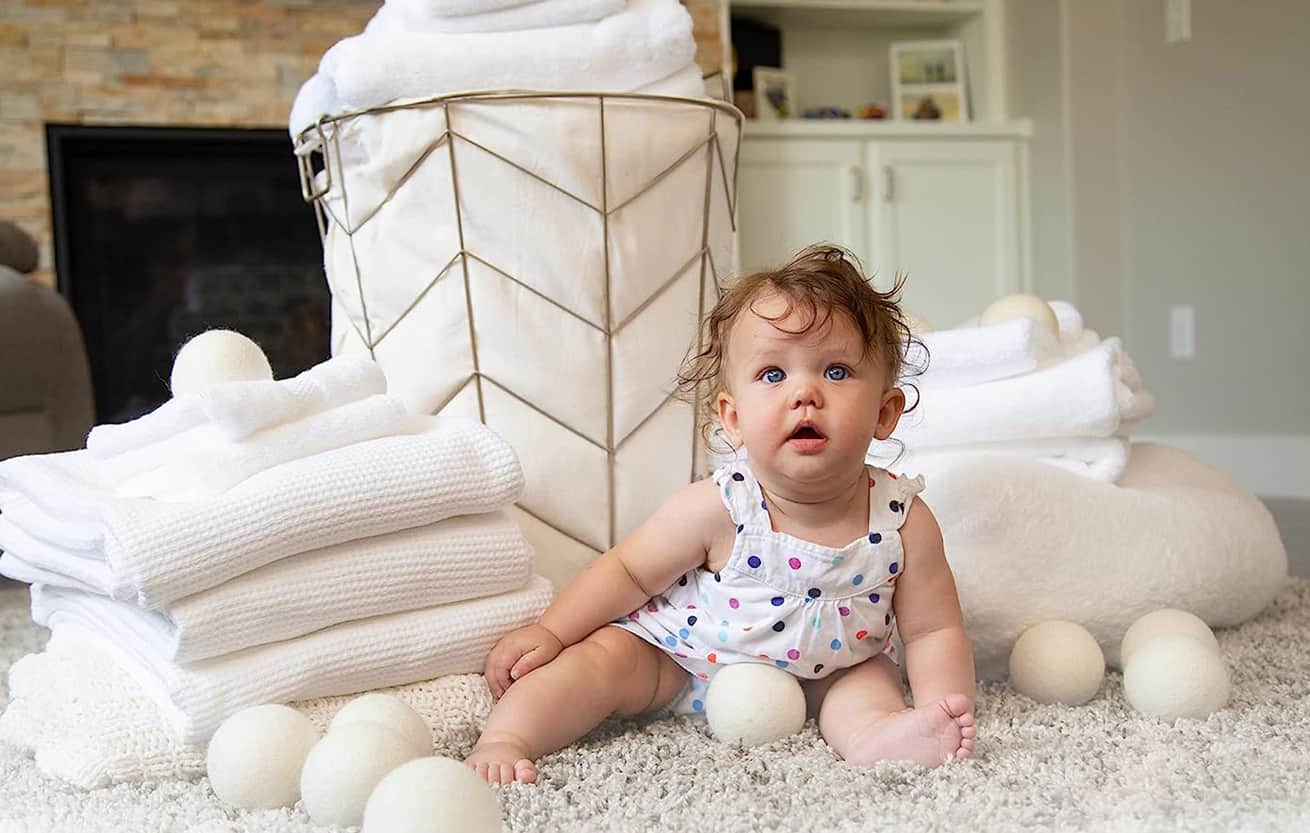
A Case for Wool Dryer Balls
The National Center for Biotechnology Information reports that the perfumes and additives in laundry products may cause skin problems. Fabric softeners and dryer sheets are very allergenic and can cause eczema, which appears as dry, itchy skin.
Dryer sheets contain fragrance and volatile organic compounds like acetaldehyde and butane, which can cause respiratory irritation. Fabric softener chemicals known as quaternary ammonium compounds have been linked to asthma. Acetone, also used in dryer sheets, can cause nervous system effects like headaches or dizziness.
Fabric softeners are also known to reduce and finally eliminate the effectiveness of water-resistant materials and reduce the absorbency of terry cloth and microfiber towels.
If you find your towels aren’t drying as well after a few cycles with fabric softener—liquid softener in the washer and or dryer sheets in the dryer—it’s time to find a better alternative that will give great results without doing harm. Enter eco-friendly wool dryer balls.
How do Wool Dryer Balls Work?
Imagine a big load of wet bath towels going into the dryer. You hit “start,” and that massive wad of wet fabric will flop around and stick together for quite a while until the layers become dry enough to separate and allow warm air to circulate. That slows the drying time, wasting time and energy.
Now imagine six wool dryer balls bouncing around (I use my entire set of six in every load), working their way between the layers of fabric, separating them so the warm air can circulate efficiently from the very start of the cycle.
I’ve tested drying times with and without wool dryer balls, and the results are quite amazing. Wool dryer balls cut at least 25% off the time to dry a load of laundry, saving time and energy. I have also found these balls stuck tightly in the long sleeve of a tee-shirt and the pocket of a pair of jeans. They work their way into tight spaces and that’s what makes them so awesome.
How to Make Wool Dryer Balls
100% Wool Yarn
First of all, wool dryer balls must be made from 100% wool that has not been treated with chemicals to make it “superwash” or “machine washable.” Repeat: Do not use wool yarn that is labeled as SuperWash or Machine Washable. Use only 100% wool yarn. Natural wool yarn will allow the dryer balls to become “felted.” Otherwise, they will just unwind and fall apart in the dryer.
Take a look at these Smart Sheep 100% Wool Dryer Balls to see what beautifully felted dryer balls look like. These are the balls I purchased at Amazon in 2016, and have used them regularly, every week, since. They look, to me, exactly as they did seven years ago. Not that’s durable!
What is Felting?
Felting is a process by which the tiny wool fibers are allowed to rub against one another vigorously. As a result, the fibers become hopelessly entangled, creating a type of stable “fabric.”
Lots of Yarn
Making one dryer ball requires one skein, about 100 yards, of 100% wool yarn. Each dryer ball needs to be weighty. This is because each one needs enough heft to bounce around in the dryer as it fluffs and separates the folds of the wet laundry. One skein per dryer ball is the absolute minimum.
You need a set of six dryer balls to be most effective in softening a typical dryer load of laundry. At anywhere from $7 to $15 per skein for feltable wool yarn—perhaps half that amount when the yarn is on sale—that pushes the cost just for materials to $42 to $90 for one set. Therefore, it makes more sense to buy them since an excellent set of solid 100% pure wool dryer balls costs less than $20.
Until recently, I’d never found the idea of making my own dryer balls from 100% wool yarn to be a reasonable activity given the reasons above. However, I changed my thinking recently when I watched an online video, The Man Who Knits. He doesn’t get his wool yarn from his local yarn shop. He recycles wool sweaters from thrift shops.
By unraveling a quality knitted wool garment, (only 100% wool or cashmere), he ends up with enough beautiful yarn to knit new garments. And what a craftsman he is. As a knitter myself, I stand in awe of his work. But I digress.
Recycled Man’s Sweater
Typically, a man’s sweater requires 6 to 8 skeins of yarn. Are you thinking what I’m thinking? Bingo! Wool dryer balls, right? All right there in one sweater. And when it’s Sale Day at the thrift store, one might expect to find a high quality, 100% wool man’s sweater for $.99!
Now, there is a process and steps one must follow for do-it-yourself dryer balls. They must be wrapped very tightly. And they must go through a specific process that forces them to become properly felted and ready to go to work in the clothes dryer.
Should you find success with making your own dryer balls from recycled 100% untreated feltable wool yarn,* you may want to make two sets—one light-colored, the other black or dark-colored. This will head off that problem of transferring white lint to your dark clothes and vice versa!
*You can quite easily test yarn to see if it will felt by cutting two small lengths. Next, rub them together vigorously between your hands for a few minutes. Look closely to see if they are becoming connected as the tiny fibers become hopelessly intertwined. If not, you can assume the yarn is either not 100% wool or other suitable natural fiber or it has been chemically treated.
You will need:
Tools:
Scissors
Large needle or crochet hook
Clothes dryer
Cooktop
Cooking pot
Hot water
Materials:
100% wool yarn
Cotton string
Old thin socks or pantyhose
Wind Up a Ball
To create a dryer ball, start by making its core: Wrap the wool yarn around your fingers and alternate directions regularly to achieve a uniformly round shape, just like winding a ball of yarn. Wrap it carefully and snugly until it forms a ball roughly the size of a tennis ball, approximately 2 1/2 inches in diameter. To secure the end of the yarn, pass it beneath several strands of yarn using either a crochet hook or a large needle. Repeat the process to form multiple cores before moving on to the next step.
Stack in a Sack
Once the cores have reached the desired size, place them inside either an old sock or the leg of a pair of pantyhose, and separate them by tying a cotton string between them.
Soak in Hot Water
Immerse the stuffed sock or pantyhose into a pot of hot water and bring it to a boil. Remove the pot from the heat source and allow the balls to soak until the water cools down. The hot water will cause the wool to shrink and felt, resulting in the creation of cores for your eventual dryer balls.
Note: If you are using dyed wool yarn that is not colorfast, you may notice some dye transfer. This shouldn’t be an issue once the balls are finished. Remember to remove the pot from the heat source once it reaches boiling point.
Dry Cores Thoroughly
Remove the sack of dryer ball cores from the water. Without untying or disturbing the sack of cores, remove any surplus water from the cores by squeezing them. Place the entire tied stack in the dryer to dry on high heat. Once the cores are thoroughly dry, cut the strings between the balls and extract them from the sock or pantyhose. Due to the felting process, the balls will be smaller and fuzzier than they were when you put them into the pantyhose or sock. No longer will they unravel due to the felting action.
Finish the Dryer Balls
Taking one core at a time, begin the wrapping process again with the wool yarn. Keep wrapping until the ball is about 3 1/2 inches in diameter. This is slightly bigger than it will be when finished. Once you have wrapped all of the cores, load them into a stack in the leg of an old pair of pantyhose or a thin sock as before. Tie off with cotton string. Load up the cooking pot again, repeating the soaking and drying process.
How to Use Wool Dryer Balls
- Depending on the size of your laundry load, place three to six balls in your dryer simultaneously and leave them for the entire drying cycle.
- Optionally, mist your dryer balls with water, then pop them in the dryer to generate a steam effect that can aid in reducing wrinkles even further.
- Enhance the fragrance of your wool dryer balls by placing a few drops of essential oil onto the wool balls before inserting them into the dryer to introduce subtle scents.
- To clean your dryer balls, toss them into your washing machine with your regular laundry and launder them in hot water.
*You can quite easily test yarn to see if it will felt by cutting two small lengths. Next, rub them together vigorously between your hands for a few minutes. Look closely to see if they are becoming connected as the tiny fibers become hopelessly intertwined. If not, you can assume the yarn is either not 100% wool or other suitable natural fiber or it has been chemically treated.
FAQ
How often should I replace wool dryer balls?
After a few uses, you'll see pilling on the surface of the balls. While this isn't attractive, it won't reduce their efficacy. You will need to replace a wool dryer ball when recharging it won't work to refresh it and you are seeing more static cling. A dryer ball is probably done if little bits and pieces of it begin to fall off.
How do you recharge wool dryer balls?
You can reuse wool dryer balls for hundreds of loads. If you are experiencing static cling and think your wool dryer balls are depleted, first try recharging them. Put the balls in a stocking or thin socks and wash them in your washing machine using a gentle cycle and hot water. Dry on high heat in the dryer.
What kind of wool is used for dryer balls?
Only 100% pure wool is appropriate for dryer balls. Wool is a highly intricate fiber that felts nicely due to the interlocking of its fibers. Lanolin is present in wool, which imparts water-repellent properties to the fiber while also allowing it to absorb moisture without allowing water to pass through the fibers. This method aids in the elimination of static cling in the dryer. Blends, cotton, or treated wool will not work since they cannot felt properly to create the ball. Using wool without a tight twist, such as wool slub, is recommended, which felts up quickly.
Published initially 6-12-19; Updated, expanded, and republished 3-22-23
EverydayCheapskate is reader supported. We participate in the Amazon Services LLC Associates Program, an affiliate advertising program designed to provide a means for publishers to earn fees by linking to Amazon.com and other affiliated sites. Thanks!

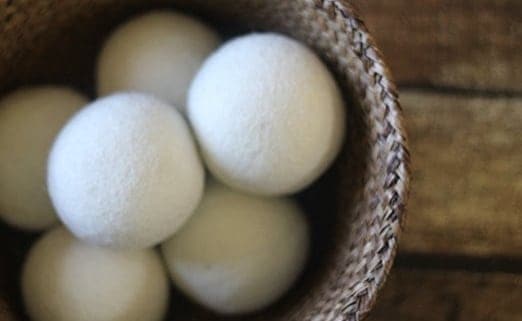





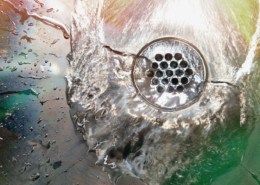
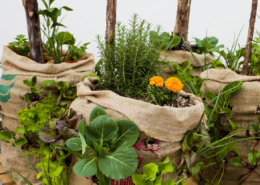
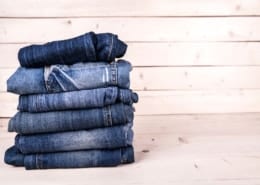
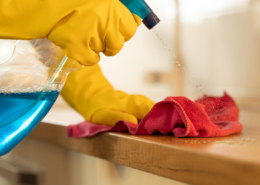
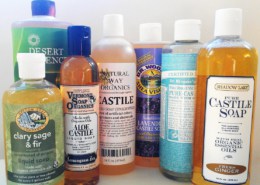


Is there a way to re-shape the wool balls I purchased? A couple of them are looking a lot more flat than round, and those 2 are really soft and squishy instead of pretty firm like they were when I first purchased them. It kind of looks like the two in question broke apart from the ball form and have kind of a flap coming off of the ball part. Any suggestions would be appreciated!
See the FAQs in the post …
I have one ball like that too, with a flap coming off. I blamed the dog! now I know it wasn’t and I’ll have to apologize and try the recharge.♀️
I live in a apt complex , I with 3 washers and 3 dryers. So, I bought 6 wool balls from Amazon. Then at Christmas time a good friend of mine gave me 2 smaller ones! I love them I put a 3 or 4 drops of lavender essential oil drops on one of them and then toss them in the dryer! You only need 1 ball that has essential oil on it or it would be too strong! Learned the hard way. lol
I bought a set of balls and used them for months and months–THEN– one by one they came apart.
So I would like to buy a new set, but after the first 10 minutes on this site I still cannot find the way to buying them. HELP !
Take a look at these Smart Sheep 100% Wool Dryer Balls. The same link is in the post above under the Heading “100% wool dryer balls.”
Click, on this link: Smart Sheep 100% Wool Dryer Balls. The same link is in the post above under the Heading “100% wool dryer balls.”
Three tennis balls work
Caution: Tennis Balls give off an odor that may be toxic.
I LOVE my wool dryer balls and I neither have the time nor patience to make them. Especially 6 of them. Like Mary said, for under $20. it’s well worth it! And I’ve been using my set of six (that I purchased for $16.95 plus tax) for about 5 years.
I was thinking estate sales often have had yarn that the owner has had for years! We are about running out of those type estates as younger knitters seem to not have as much wool.
I found 2 today!!! 🙂
Is it possible to make wool dryer balls from the wool from inside an old wool quilt?
You can try. But I can’t say one way or the other because I have no idea what that “old wool” is. Is it batting? Yarn? Roving?
I had a set of those knobby silicone (or whatever) dryer balls but they were so noisy! So I got a thrift store wool sweater, washed it in hot water and and dried it on cotton. Then I cut it into thin strips and and wrapped the noisy balls and stitched the ends into place. No more noise.
I love the wool dryer balls i purchased! and, they can be entertaining because i find them in some interesting places… like in the sleeve of a blouse, inside a pillow case i already put on the pillow, in the pocket of a jacket, or my cat playing with one that fell out of the dryer. 🙂